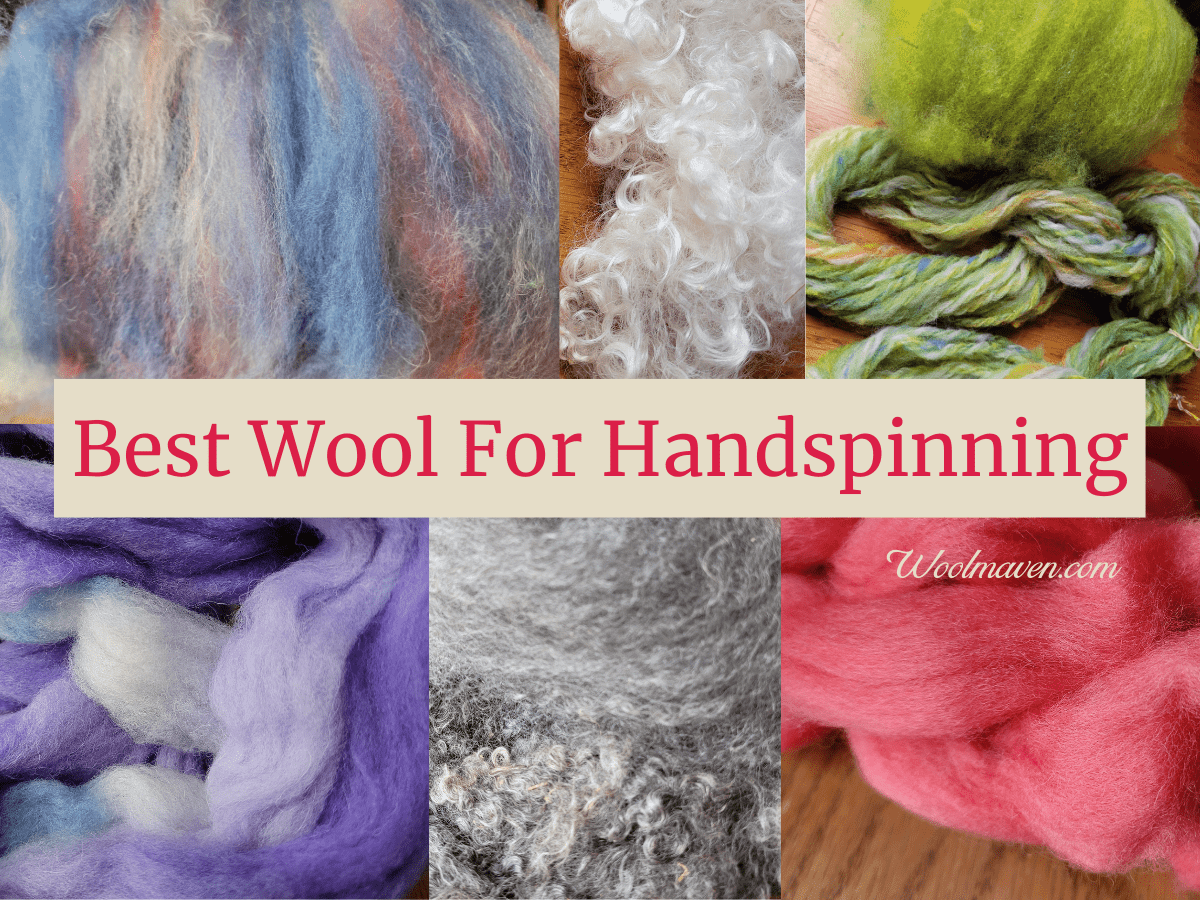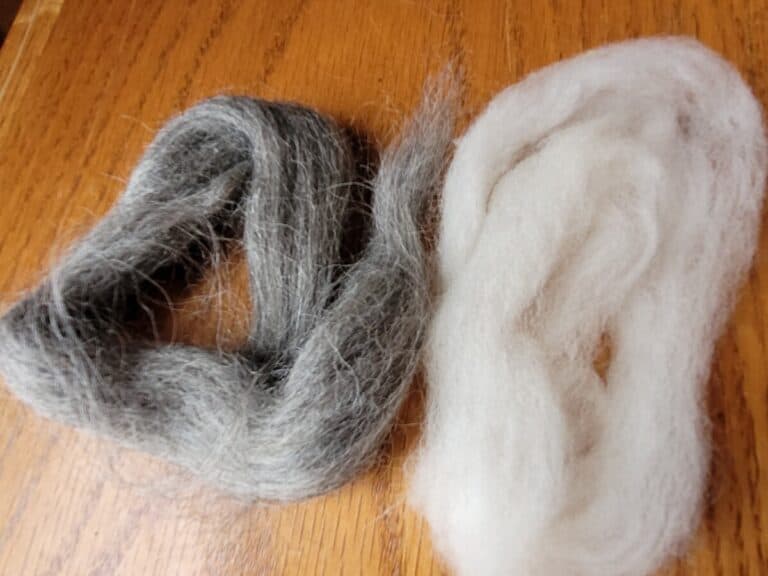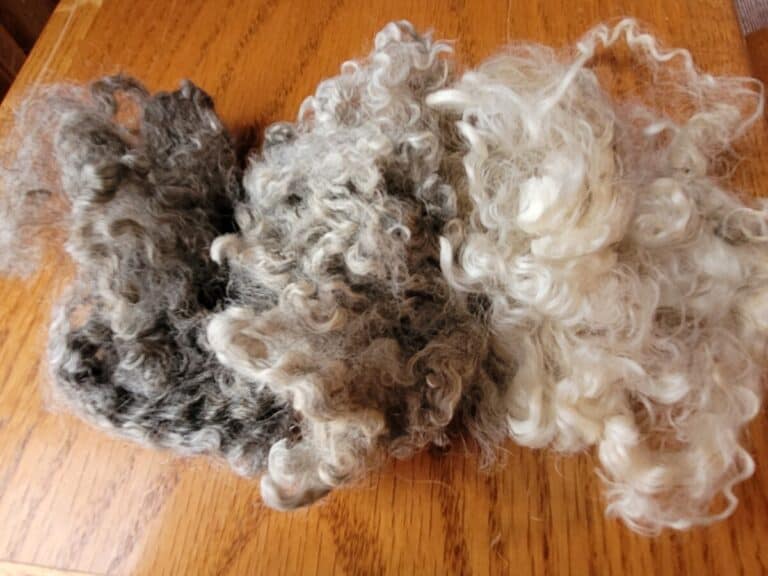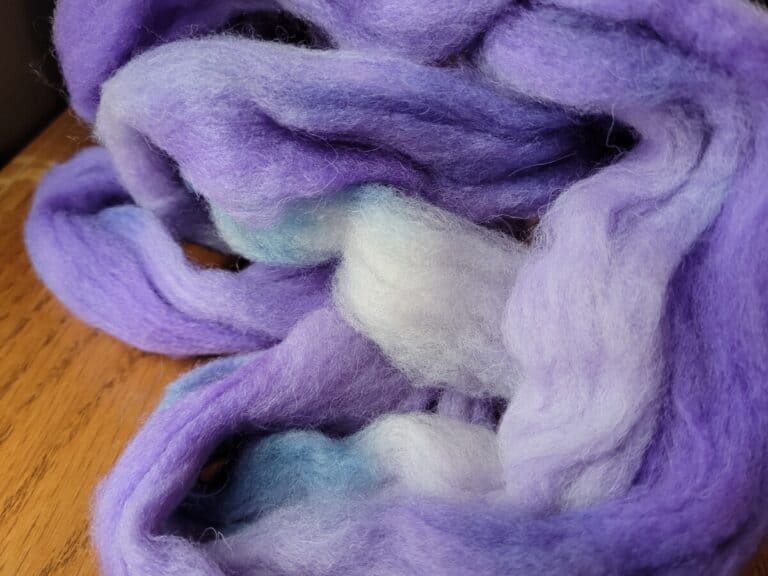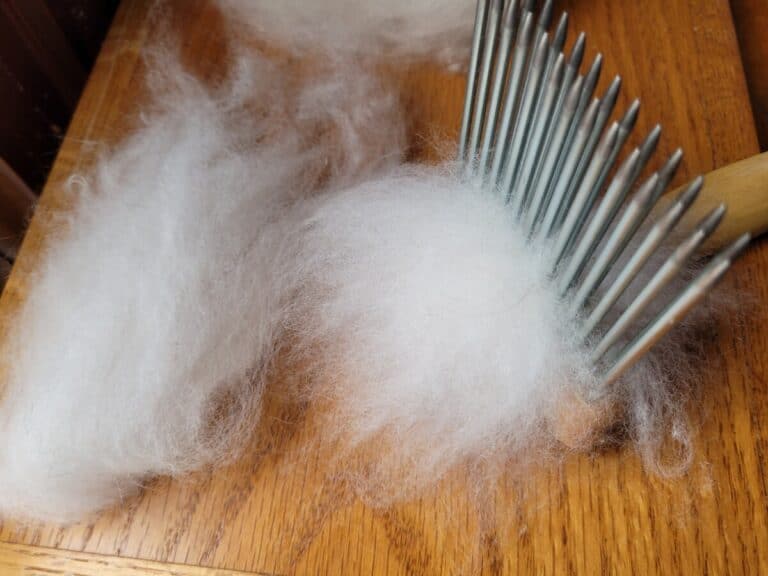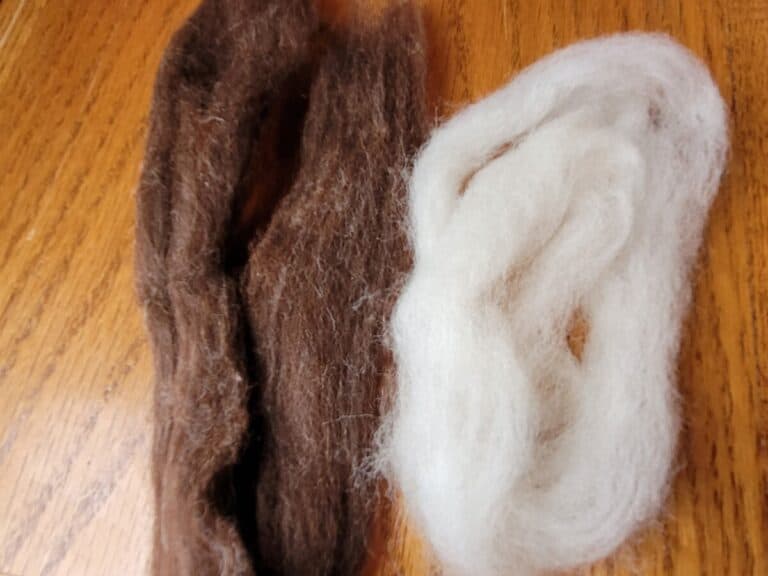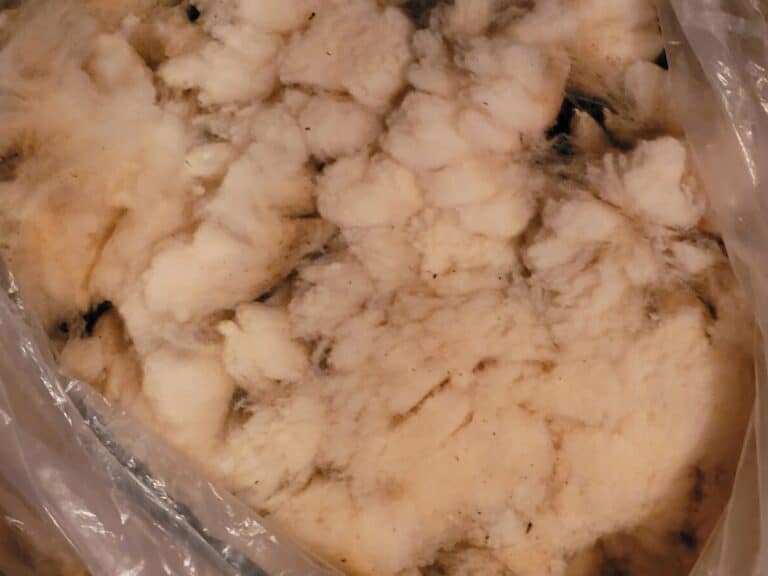What Wool Is Best For Handspinning?
You might have the option of working with wool from a local flock, be looking for wool perfect for that next project or just looking to broaden your spinning experience.
There are a ton of choices of wools to spin from different breeds of sheep, all of which you’ve heard great things about their wool. What is the best wool for you to spin?
The best wool to spin is one that matches the needs of your project, comes in the preparation you need (top or roving) and is appropriate for your skill level. If you are a beginner, start with Corriedale combed top then move to other easy to work with wools like Blue Faced Leicester or Romney.
This post contains affiliate links, which means I receive commissions if you choose to purchase through links I provide (at no extra cost to you).
Looking for a great resource on which fiber to pick and how best to use it? Consider getting The Fleece And Fiber Sourcebook, filled with wonderful pictures and details on just about any wool you can find.
Need a list of beginner friendly wools with links on where to buy them? Look no further, here’s a list of four wools that are great to work with!
Best wool for your specific project
The best wool for your specific project is one that most closely matches the requirements of the project with your needs and skills as a handspinner.
So, what wool is that? There’s the rub, you’ll have to decide that for yourself by doing some research and taking some time to think through the project you are planning.
Dig deep here and really think. I tend to get caught up in wanting to use a wool that caught my eye or that I have heard or read a lot about in my current project.
Notice I didn’t get into if my project and the wool’s characteristics match up, I’m just flying by the seat of my pants. Not great, unless you like to be surprised or are experimenting, then super!
7 Places To Get Wool gives you some ideas on places to source your project wool, both in person and online.
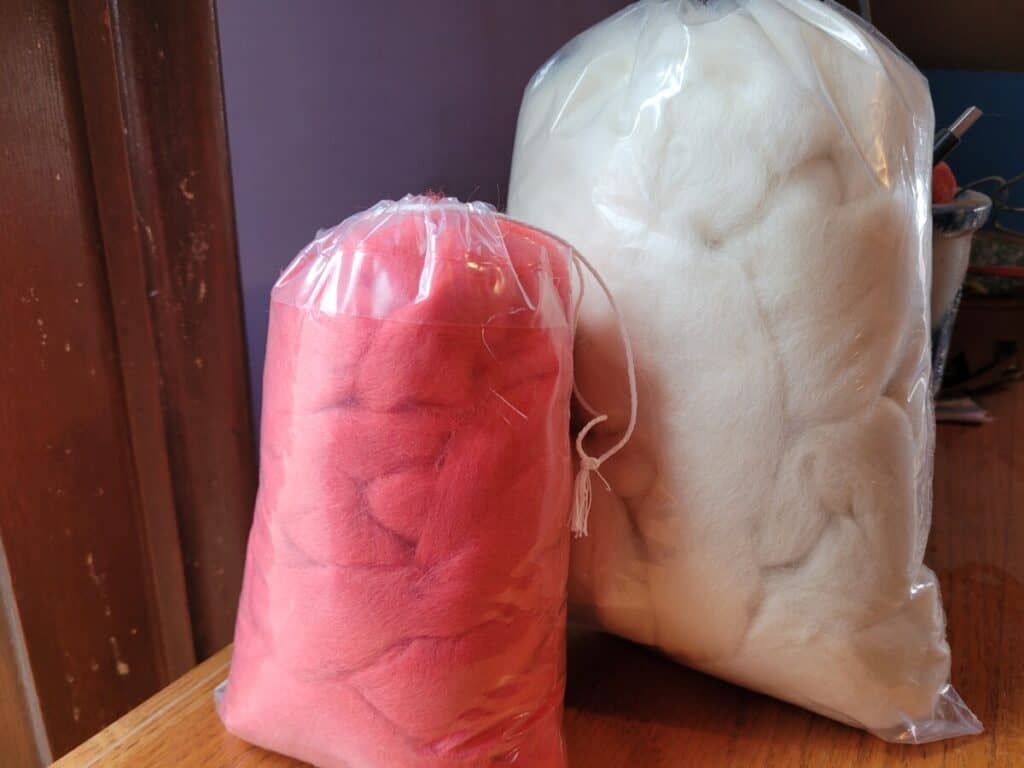
Best wool preparation is combed top
The best wool preparation, this is the way that the wool is processed to make it ready for handspinning, is combed top.
There are other wool preparations available that you’ll probably want to try later, when you have more practice. Your best bet and the easiest wool to work with at the start is combed top.
Wool Roving Or Top: Which one you should use and why goes over the differences between the two fiber preparations and why you would choose one over the other for your spinning project.
Best wool for beginners is Corriedale
The best wool for beginners is Corriedale. Corriedale is easy to work with since it has good length to the staple but also is fine enough to make wearables.
One of the little talked about traits of easy to work with wool is grip.
Grip means that the wool has enough crimp that the fibers kind of hold themselves together. Wool with little to no grip, like shiny wool, is slippery and frustrating to work with.
Get wool with grip to get yourself started and then move to the more challenging wools if you choose.
9 Beginner Friendly Wools To Spin gives you a few more wool options, if you are having trouble finding Corriedale.
Best wool for easy spinning is medium
The best type of wool for easy spinning is medium wool. Medium wool is from 23-30 microns, so probably not baby soft, but definitely wearable, and had a staple length of 3-5 inches.
Here’s my list of four, super easy to work with, beginner friendly wools that will make learning to spin easier!
If you can go for more like 4 inches. That is a nice, workable length that will be easy to manage.
Of course, I can’t say that I have tried all of the medium fleeced breeds the fiber world has to offer, but I have been expanding my experiences to see which ones I like and which ones I don’t.
Here are some medium wools that were new to me this year:
- Black Welsh Mountain-very dark (I know that sounds dumb, but put it next to some other naturally colored wool and you’ll see what I mean), easy to spin
- Falkland Island-love it! wonderful wool to work with and almost has an embroidery floss feel to the yarn, wool in the bag had a lot of static, but for spinning it was great to work with
- Gotland-lovely and shiny wool, fun to knit-it keeps that nice shine, tough for me to spin at first due to the slippery fiber but workable once I “got it”
- Zwartbles-nice to work with, easy to spin fiber, definitely beginning handspinner friendly, has a medium brown color with more of a slight red hint rather than being as black as the sheep looks in pictures
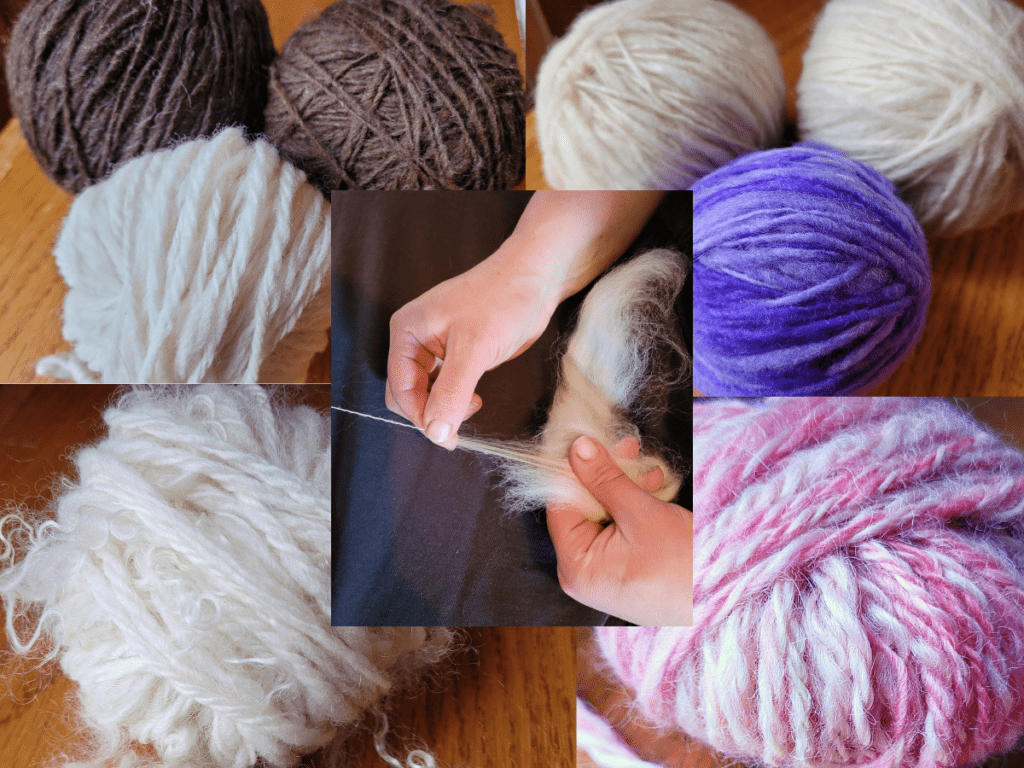
Consider Zwartbles, if you are looking for an easy to spin, darker wool. It’s not super dark, but a nice brown and is quite spinnable.
Best wools for fine spinning
The best wools for spinning fine are, not so surprisingly, fine wool sheep. These include Merino, Polwarth, Cormo, Targhee, Rambouillet, fine wooled Shetland, etc.
My favorite fine wool breed is Polwarth, I love the longer staple length and the easy to work with fiber.
Granted, I do not work much in the superfine realm, which would be Merino territory, but just for fine wool yet easy to use Polwarth is hard to beat.
Polwarth is a wonderful wool to spin, one of my favorites! If you haven’t tried it yet, give it a shot, you’ll be glad you did!
Here are some of my thoughts on the finer wools I sampled this year:
- Merino-I bought some small farmer raised naturally colored Merino this year, it spins easily and is nice to work with, by feel I can tell it’s not overly fine, but that is okay with me
- Polwarth-love it! this is my favorite wool discovery of the year (so far!), wonderful to work with, nice staple length, felts well, overall winner for me and one I will be buying again
- Rambouillet-I had a harder time with this one at first, I think due to a shorter staple length, but made a nice, bouncy yarn once I got the feel for working with it
You may ask why don’t I prefer Merino?
It’s not that I don’t like Merino, I do, I just happen to prefer other wools in the finer end of the fiber supply that work better for me and the projects that I tend to work on.
I am working my way toward finer spinning and finer wools and I like a bit longer of a staple length to work with than Merino normally would have.
The other reason I do not have a lot of Merino time on my wheel is that I tend to prefer to buy fiber at local events rather than ordering and our climate is not great for Merinos.
We are too wet and humid here for a Merino to be at it’s best. Some folks in the area do raise them, more for a show flock than spinning.
This makes the opportunity to get a nice Ohio raised Merino fleece at a local fiber festival fairly low. Maybe I just need to look harder, it’s definitely on my list for this year!
Is Merino Hard To Spin? goes into more details on working with and spinning this fine wool.
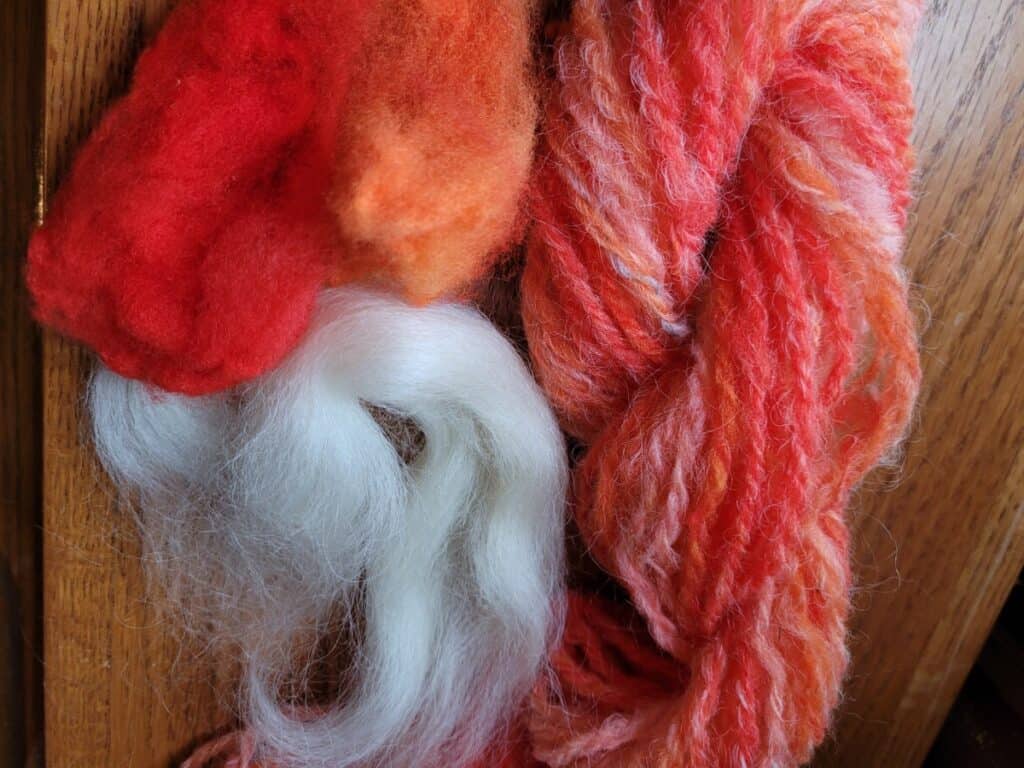
Best long wool for spinning
The best long wool for spinning, when choosing the best based on ease of spinning, is Romney. It is easy to work with and is becoming more available.
If you are looking for a super easy to work with, longer staple length wool, consider Romney Top. It’s long enough for you to draft without adding too much twist, yet not slip out of your fingers!
Romney also has grip, which is so important for new spinners!
I bought some Romney to work with just this spring. I had been wanting to find some but never got myself in gear and actually ordered until a few months ago.
It was interesting, and to be honest, not what I had expected.
It was super easy to use, that was the rumor and it seemed to be so, but the unexpected part was the almost rough feeling of of the yarn. I thought it would be softer.
Had I taken the time to investigate the micron range of Romney, this would have been obvious from the start, but I didn’t so I was surprised, once again I shouldn’t have been!
Please do not take this as a knock against Romney, it’s great wool, just not a wool that I enjoy using now, that may change.
Blue Faced Leicester is a fairly easy to use long wool
If you are looking for a workable longer wool with some luster to it, consider getting some BFL (Blue Faced Leicester, pronounced Less-ter).
Blue Faced Leicester has luster and a bit more slip, making it particularly good to use on a spindle.
BFL has good length, is one of the finer long wools available, is easy to work with and has a lovely shine to the yarn.
This wool also has drape, meaning it would make a wonderful scarf or shawl.
If you are having trouble with your yarn slipping out of your fingers, BFL is not your best choice, since it is a bit slippery.
If you are having trouble with your wool sticking together, so you aren’t drafting as you should, especially on a spindle, BFL may be just what you are looking for!
Here are the long wools that I worked with this year:
- BFL (Blue Faced Leicester)– this time I ordered some adult BFL (what I used before was lamb fleece), it is easy to spin (if you can handle the slipperiness), is an all star on the drop spindle and has a great shine
- Romney-easy to spin, beginner friendly type of wool, did all that I asked of it, more coarse feeling once knitted up than I was anticipating
- Teeswater– spins pretty easily, seems to have a bit of static, is good for durability but not wearables (I got combed top, locks may be different as far as wearability)
My experience with BFL
BFL is one of the first wools that I bought to work with, before I had just used wool from our sheep, and it was quite a different experience!
The BFL was so soft and easy to use, it was really wonderful to work with! I’d still start with Corriedale, but try BFL and soon as you get the feel for spinning, you’ll be glad you did!
On the downside, all the hats I made from it grew and grew, I should have taken that into account, but I didn’t!
This beautiful wool would have been better used in a way that would take advantage of it’s intrinsic characteristics, like a table runner or a lovely shawl.
The Woolery How To Get Started With Spinning is a nice overview of all things spinning, from spindles and wheels to fiber and has some how to videos, as well.
New to spinning and still not sure what to get? I’ll make it easy, get my list of easy to spin, beginner friendly wools!

